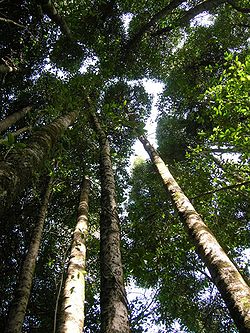You can help expand this article with text translated from the corresponding article in Spanish. (December 2009)Click [show] for important translation instructions.
|
| Gomortega | |
|---|---|
 | |
| Gomortega keule in Biobío Region | |
| Scientific classification | |
| Kingdom: | Plantae |
| Clade: | Tracheophytes |
| Clade: | Angiosperms |
| Clade: | Magnoliids |
| Order: | Laurales |
| Family: | Gomortegaceae Reiche [2] |
| Genus: | Gomortega Ruiz & Pav. |
| Species: | G. keule |
| Binomial name | |
| Gomortega keule | |
 | |
| Synonyms | |
Adenostemum nitidum(Ruiz & Pav.) Pers. Contents | |
Gomortega keule (syn. G. nitida; Spanish names keule, queule, and hualhual) is a species of tree endemic to Chile. It is the sole species of the genus Gomortega and, according to the APG IV system of 2016 (unchanged from the APG systems of 2009, 2003 and 1998), of the monotypic family Gomortegaceae, assigned to the order Laurales in the clade magnoliids. [3]

